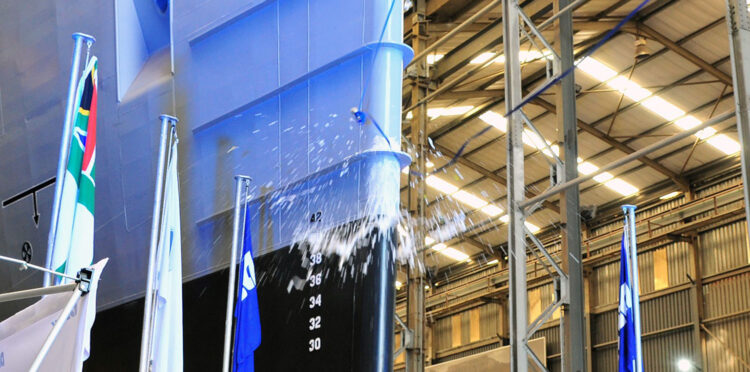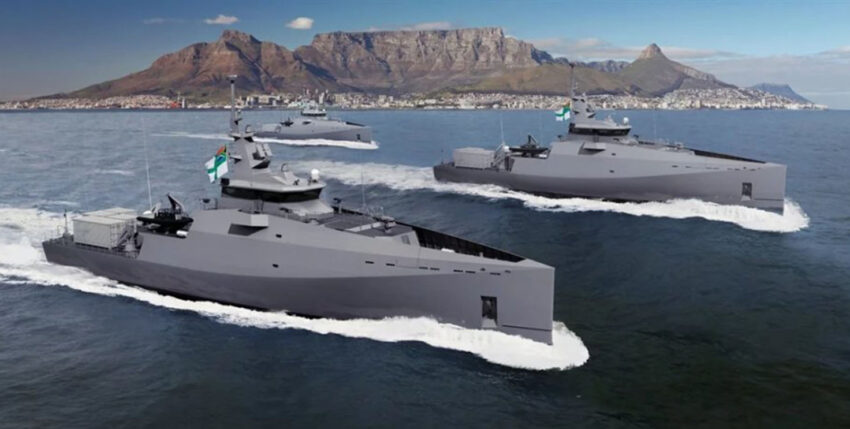The first of the South African Navy's (SAN) three new Multi Mission Inshore Patrol Vessels (MMIPV) was christened on 12 February. The shipyard, Damen Shipyards Cape Town (DSCT), emphasised that the 62-metre long and 11-metre wide vessel is the first "Sea Axe" unit to operate in South Africa. Sea Axe is a Damen-patented design characterised by a straight, axe-shaped bow. The 1000 tonne displacement patrol boats replace the previous, much smaller fast patrol boats, which were based on the design of the Israeli Sa'ar-4 class. SAS "Galeshewe" (P 1567) was the first of the three units still in service at the time to be decommissioned in November last year.

The armament of the Biro units is to consist of a 20-mm Super Sea Rogue gun from Reutech. Earlier information envisaged Denel's double-barrelled 20-mm GI-2 gun. The boats will each have a 7-metre and a 9-metre RHIB. The aft deck offers additional storage space for a 20-foot container. In addition to a 40-strong crew, the patrol units offer accommodation for up to 22 additional people.
The Biro project originally envisaged three coastal patrol vessels and three to six offshore patrol vessels (OPV). Due to a lack of budget funds, the programme was reduced to three MMIPVs. Armscor, the South African procurement authority, awarded the contract to Damen Shipyards Cape Town, a subsidiary of Dutch shipyard group Damen, in January 2018. Despite initial scepticism in view of the Covid-19 situation, the schedule has so far remained on track. The first boat with the hull number P 1571 is scheduled to enter service in 2021. The sister ships are to follow at one-year intervals. The 1.5 billion rand project (91 million euros) was launched after several attempts following the completion of the strategic defence package (including four Meko frigates and three submarines). South Africa has a need for smaller units, partly to relieve the larger ones and partly to replace older ones that have become obsolete. The aim is to take cost-effective and targeted action against crime in South Africa's extensive coastal waters (2500 kilometres of coastline) and the extended maritime economic zone, where smuggling and illegal fishing are commonplace. The interest goes beyond South Africa as an economic and industrial hub in southern Africa. Therefore, conceptually, the potential impact on maritime security in the South African Development Community (SADC), the rest of Africa and beyond must always be considered.
Text: Hans-Uwe Mergener; Illustrations: Damen Shipyards










